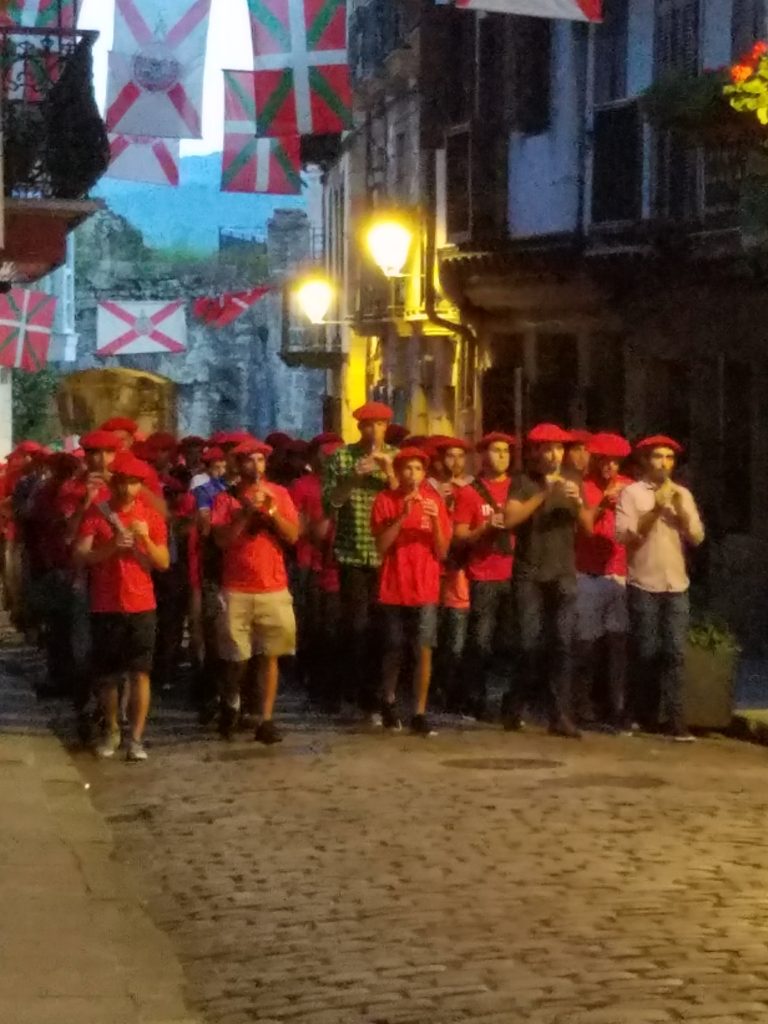The last time we visited Spain, almost exactly two years ago, we chanced upon preparations and rehearsals for the joyous Alarde festival in Hondarribia. We must, I decided, return sometime for the event itself, and Dan kindly agreed.

But of course, it makes no sense to travel to Hondarribia for a day or two, then back to California. So we are now embarked on an entire two-week vacation partly involving wine-tasting in Bordeaux and partly an in-depth exploration of Basque country, which we passed through too quickly last time around.
Yesterday, we drove through the mountains at the heart of Basque country while traveling from Azpeitia to Tolosa. Surprisingly, the road crossed and re-crossed one of the main pilgrimage routes to Santiago de Compostela (indicated on the map by the scallop shell, the sign of the pilgrim).




Something moves me deeply about crossing the pilgrimage route. And so, I was reminded of our own pilgrimage to Santiago two years ago. We did not walk one of the established routes, except for the 3.5 kilometers at the end. No, we flew, drove, were driven, then drove again in order to get there. And then, at the end, we walked. And thought about what it meant to be a pilgrim. You can read that blog post here.
Today I am still thinking about being a pilgrim. The hero of my as-yet-unpublished award-winning novel Alien Son is named Mikel Pelerin. His surname, which means “pilgrim” in French, is not an accident. I chose it because he leaves Earth, the planet of his birth, to live on another planet, where he takes on a role critical to his new home’s survival. And is willing to risk his life for his beliefs.







